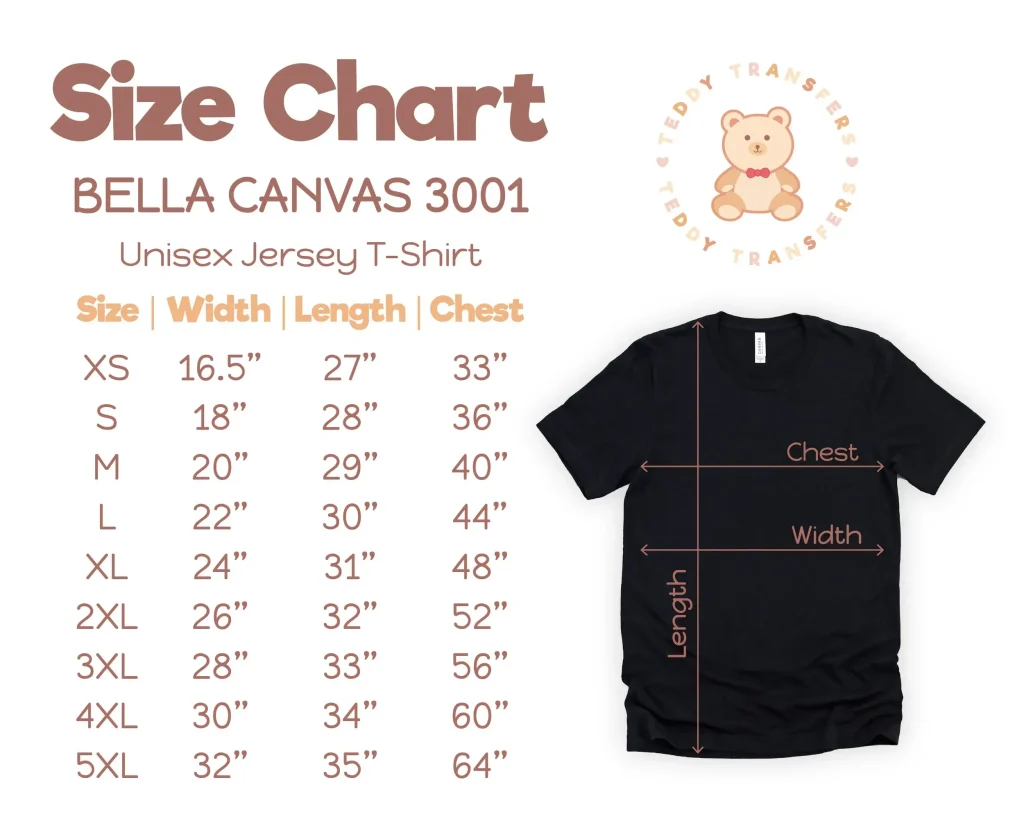DTF transfer dimensions play a crucial role in the overall success of any Direct-to-Film (DTF) printing project. In this modern era of textile printing, the ability to choose the correct size for DTF transfers can dramatically affect the final print quality and design impact on various fabrics. Understanding the nuances of transfer sizing not only enhances fabric compatibility but is also vital for achieving vibrant and impressive prints. In this comprehensive discussion, we will explore best practices in DTF transfer sizing, which ensures that your designs not only look great but also stand the test of time in durability. By mastering DTF transfer dimensions, you’ll not only improve your print quality but also elevate your textile designs to new professional heights.
When diving into the world of Direct-to-Film printing, one quickly encounters the importance of transfer sizing or DTF dimension selection. This integral element of the printing process determines how well the design translates onto the fabric, impacting overall aesthetic and usability. Designers and manufacturers alike must consider factors such as fabric compatibility and optimal sizing to achieve the best outcomes when printing on textiles. As we unravel the intricacies of DTF transfer dimensions, we will also highlight effective techniques and common practices that elevate the quality of prints and streamline the design process. Emphasizing the right dimensions not only ensures clarity and vibrancy but also adheres to the best practices in DTF printing.
Importance of Choosing the Right DTF Transfer Dimensions
Choosing the right dimensions for your DTF transfers is essential for ensuring high-quality prints that stand out on any fabric. The size of the transfer can greatly influence the design’s visibility and clarity, particularly as it relates to achieving a professional finish. Larger designs can be striking, but they require careful attention to resolution. If a large DTF transfer is made without adequate resolution, key details may become blurred or lost in the final print. Adjusting dimensions to match the intricacy of the design is crucial – small sizes may not showcase complex details effectively, while oversized transfers can overwhelm subtle designs.
Understanding standard sizing guidelines can help streamline the process of selecting DTF transfer dimensions. For adult apparel, a transfer size of **10” x 12”** is often deemed ideal, striking a balance between visibility and design integrity. Furthermore, experimenting with size variations in your mock-ups allows designers to visualize their work and make informed adjustments that enhance the overall aesthetic. This practice can drastically improve the odds of achieving a successful final product, ensuring that the DTF transfer makes a significant impact.
Best Practices for DTF Transfer Size Selection
To effectively choose the right transfer size, industry best practices suggest creating mock-ups before committing to any extensive print runs. This means taking the time to layer your design over an image of the target garment, giving you a visual representation of how your sizing will look in real life. Utilizing graphic design software that allows for easy manipulation of the size and placement can save you a considerable amount of time and resources and reduce errors in sizing.
Another key best practice is to consider the fabric compatibility of your chosen DTF transfer size. Different fabrics react differently to DTF printing; thus, sizing should be tailored accordingly. For instance, on materials like cotton, you can typically use a larger transfer without worrying about distortion, whereas more delicate fabrics like silk might necessitate a smaller transfer to maintain their structure and appearance. By understanding your fabric’s characteristics, you can select the optimal size that ensures both a stunning print quality and fabric integrity.
Fabric Compatibility and Transfer Sizing
Understanding how fabric compatibility influences DTF transfer sizing is crucial for achieving the best results. Each type of fabric has its own set of characteristics that affect how a transfer interacts with it. For example, cotton fabrics are quite forgiving and typically support medium-sized transfers without compromising print quality. Sizes around **10” x 12”** work well for many adult garments, ensuring sufficient visibility while maintaining detail.
On the other hand, synthetic fabrics such as polyester may require smaller transfers, usually between **8” x 10”**. This is to prevent any distortion and ensure the transfer adheres neatly to the fabric. Additionally, blends of cotton and polyester can lead to unique washability and comfort features, thus demanding further experimentation with size until achieving the desired outcome. Understanding these fabric nuances can significantly affect the durability and appeal of your DTF printed designs.
Mock-up Techniques for Design Clarity
Utilizing mock-ups for DTF transfer designs is a crucial step in the printing process. Graphic design software makes it easy to overlay your transfer design onto a digital image of the garment, allowing you to experiment with size and placement. These mock-ups should include adjustments for color contrasts and positioning to ensure visibility and aesthetic appeal, which can significantly enhance print quality.
When creating a mock-up, it’s advisable to test various sizes and styles against your selected fabric background. This not only helps in visualizing the end result but also aids in discovering the most effective size for your specific design and garment type. Ensuring that your DTF transfer aligns well with the fabric will give you a better chance at achieving vibrant final products that resonate well with your target audience.
Common Challenges in DTF Transfer Sizing
While mastering DTF transfer sizing, it’s important to be aware of common challenges that may arise in the process. One such issue is scaling; if a design is scaled improperly, it can lead to a loss of detail which can significantly compromise print quality. Additionally, misalignment during the application process can cause the transfer to look off-center or awkward on the garment, detracting from the overall look.
Another challenge is the fabric choice, which can complicate the sizing process. Some fabrics shrink or stretch more than others, necessitating further adjustments in transfer size to achieve ideal placement and appearance. By staying informed about these potential pitfalls and adopting a flexible approach to sizing, you can make adjustments that lead to smooth production and successful outcomes in your DTF projects.
Keeping Up with DTF Technology Trends
The landscape of DTF printing technology is constantly evolving, which means that staying up to date with current advancements is essential for effective transfer sizing. Emerging technologies often introduce better inks and transfer films that can enhance the quality of prints on a larger scale. By engaging with industry news and trends, designers can learn about innovative practices that can improve their print quality while allowing for flexibility in design sizing.
Moreover, being involved in the DTF community through forums, social media, and industry blogs can provide valuable insights into how sizing adjustments are being implemented successfully by others. Understanding what works in contemporary practices can help you adapt your strategies for DTF transfer dimensions and lead to more effective and innovative approaches in your projects.
Frequently Asked Questions
What are the recommended DTF transfer dimensions for adult apparel?
For adult apparel, the standard DTF transfer dimensions typically range between 8″ and 14″. This size range provides a good balance of visibility and detail, ensuring that your designs stand out while still being appropriately sized for the garment.
How do fabric types affect DTF transfer sizing?
Different fabrics can significantly impact DTF transfer sizing. For example, thicker materials like sweatshirts accommodate larger designs (around 10″ x 12″), while lighter fabrics like t-shirts may require smaller transfers (around 8″ x 10″) to maintain fabric integrity and print quality.
What best practices should I follow for DTF transfer sizing?
To ensure optimal DTF transfer sizing, consider starting with a size of 10″ x 12″ for adult garments, adjust based on fabric type, and always create sample prints before proceeding with large runs. Gathering feedback can also help refine your design choices.
Why is resolution important for DTF transfer dimensions?
Using a high resolution of at least 300 DPI when designing for DTF transfers is crucial. It ensures that the print maintains sharpness and clarity, especially at larger sizes, preventing loss of detail that can compromise the final print quality.
How can I test DTF transfer sizes effectively?
To test DTF transfer sizes, create mock-ups of your designs on images of the target garments. Experimenting with different sizes helps visualize placement and assess the overall aesthetic before finalizing which dimensions to use for your transfers.
What are some common dimensions for DTF transfers on children’s clothing?
For children’s clothing, DTF transfers are typically sized between 5″ and 8″. This range helps maintain the design’s integrity and visual appeal without overwhelming the smaller garment.
| Key Aspect | Details |
|---|---|
| DTF Transfer Importance | Choosing correct dimensions affects design quality and aesthetics. |
| Standard Sizes for Adult Apparel | Ranges between 8″ and 14″ are recommended. |
| Design Resolution | 300 DPI is advised for clear and sharp prints. |
| Fabric Types | Different fabrics require various transfer sizes for best results. |
| Common Size Practices | Start with 10″ x 12″ for adults, and adjust for children’s clothing. |
| Industry Trends | Advancements in technology improve transfer quality and eco-friendliness. |
Summary
DTF transfer dimensions play a crucial role in achieving optimal quality and impact in your printing projects. Understanding these dimensions helps in balancing design aesthetics with fabric compatibility, allowing designers to produce stunning outputs. By considering factors like fabric type and industry trends, you can make informed decisions that elevate your DTF prints. Embracing this knowledge paves the way for creating vibrant and durable transfers that meet both artistic and functional goals, ensuring your designs resonate effectively with your audience.



